A 24-GHz RF Transmitter in 65-nm CMOS for In-Cabin Radar Applications
Abstract
:1. Introduction
2. Circuits Design
3. Results
4. Conclusions
Author Contributions
Funding
Acknowledgments
Conflicts of Interest
References
- Droitcour, A.; Lubecke, V.; Lin, J.; Boric-Lubecke, O. A microwave radio for doppler radar sensing of vital signs. In Proceedings of the 2001 IEEE MTT-S International Microwave Symposium Digest, Phoenix, AZ, USA, 20–25 May 2001; pp. 175–178. [Google Scholar]
- Xiao, Y.; Lin, J.; Boric-Lubecke, O.; Lubecke, M. Frequency-tuning technique for remote detection of heartbeat and respiration using low-power double-sideband transmission in the ka-band. IEEE Trans. Microw. Theory Tech. 2006, 54, 2023–2032. [Google Scholar] [CrossRef]
- Park, J.-H.; Jeong, Y.-J.; Lee, G.-E.; Oh, J.-T.; Yang, J.-R. 915-MHz continuous-wave doppler radar sensor for detection of vital signs. Electronics 2019, 8, 855. [Google Scholar] [CrossRef] [Green Version]
- Gu, C.; Li, C. Assessment of human respiration patterns via noncontact sensing using doppler multi-radar system. Sensors 2015, 15, 6383–6398. [Google Scholar] [CrossRef] [PubMed] [Green Version]
- Andersen, N.; Granhaug, K. A 188-mW pulse-based radar SoC in 55-nm CMOS for non-contact human vital signs detection. IEEE J. Solid State Circuits 2017, 52, 3421–3433. [Google Scholar] [CrossRef]
- Kim, D. Wireless vital signal tracking for drivers using micro-doppler seatback radar. In Proceedings of the 2018 9th IFIP International Conference on New Technologies, Mobility and Security (NTMS), Paris, France, 26–28 February 2018; pp. 1–5. [Google Scholar]
- Brenna, G.; Tschopp, D.; Pogin, J.; Kouchev, I.; Huang, Q. A 2-GHz carrier leakage direct-conversion WCDMA transmitter in 0.13-μm CMOS. IEEE J. Solid State Circuits 2004, 39, 1253–1262. [Google Scholar] [CrossRef]
- Nam, I.; Choi, K.; Lee, J.; Cha, H.-K.; Seo, B.-I.; Kwon, K.; Lee, K. A 2.4-GHz low-power low-IF receiver and direct-conversion transmitter in 0.18-μm CMOS for IEEE 802.15.4 WPAN applications. IEEE Trans. Microw. Theory Tech. 2007, 55, 682–689. [Google Scholar] [CrossRef]
- Webster, D.; Scott, J.; Haigh, D. Control of circuit distortion by the derivative superposition method. IEEE Microw. Guided Wave Lett. 1996, 6, 123–125. [Google Scholar] [CrossRef]
- Im, D.; Nam, I.; Lee, K. A low power broadband differential low noise amplifier employing noise and IM3 distortion cancellation for mobile broadcast receivers. IEEE Microw. Wirel. Compon. Lett. 2010, 20, 566–568. [Google Scholar] [CrossRef]
- Nam, I.; Kim, B.; Lee, K. CMOS RF amplifier and mixer circuits utilizing complementary characteristics of parallel combined NMOS and PMOS devices. IEEE Trans. Microw. Theory Tech. 2005, 53, 1662–1671. [Google Scholar] [CrossRef]
- Karanicolas, A. A 2.7 V 900 MHz CMOS LNA and mixer. IEEE J. Solid State Circuits 1996, 31, 1939–1944. [Google Scholar] [CrossRef]
- Choi, C.; Kwon, K.; Nam, I. A 370 μW CMOS MedRadio receiver front-end with inverter-based complementary switching mixer. IEEE Microw. Wirel. Compon. Lett. 2016, 26, 73–75. [Google Scholar] [CrossRef]
- Hwang, I.-C. Low-noise high-PSRR and positive-TC voltage reference for a temperature- and supply-compensated CMOS ring oscillator. IEIE Trans. Smart Process. Comput. 2019, 8, 331–334. [Google Scholar] [CrossRef]
- Im, D.; Nam, I.; Kim, H.-T.; Lee, K. A wideband CMOS low noise amplifier employing noise and IM2 distortion cancellation for a digital TV tuner. IEEE J. Solid State Circuits 2009, 44, 686–698. [Google Scholar] [CrossRef]
- Kaukovuori, J.; Stadius, K.; Ryynanen, J.; Halonen, K.A.I. Analysis and design of passive polyphaser filters. IEEE Trans. Circuits Syst. I 2008, 55, 3023–3037. [Google Scholar] [CrossRef]
- Kim, D.-M.; Kim, D.; Jeong, H.-G.; Im, D. A reconfigurable CMOS inverter-based stacked amplifier with antenna impedance mismatch compensation for low power short-range wireless communications. Electronics 2020, 9, 562. [Google Scholar] [CrossRef] [Green Version]
- Choi, S.-E.; Ahn, H.; Hur, J.; Kim, K.-W.; Nam, I.; Choi, H.; Lee, O. A fully integrated compact outphasing CMOS power amplifier using a parallel-combining transformer with a tuning inductor method. Electronics 2020, 9, 257. [Google Scholar] [CrossRef] [Green Version]
- Kim, B.; Kim, S.; Lee, Y.; Kim, S.; Shin, H. A 28 GHz quadrature up-conversion transmitter in 65 nm CMOS for 5G mm Wave Radio. In Proceedings of the International SoC Design Conference, Jeju, Korea, 6–9 October 2019; pp. 2163–2169. [Google Scholar]
- Lee, H.; Park, M.; Min, B. A 26-GHz transmitter front-end using double quadrature architecture. PLoS ONE 2019, 14, e0216474. [Google Scholar] [CrossRef] [PubMed]
- Cao, C.; Ding, Y.; Yang, X.; Lin, J.-J.; Wu, H.-T.; Verma, A.K.; Lin, J.; Martin, F. A 24-GHz transmitter with on-chip dipole antenna in 0.13-μm CMOS. IEEE J. Solid State Circuits 2008, 43, 1394–1402. [Google Scholar] [CrossRef]

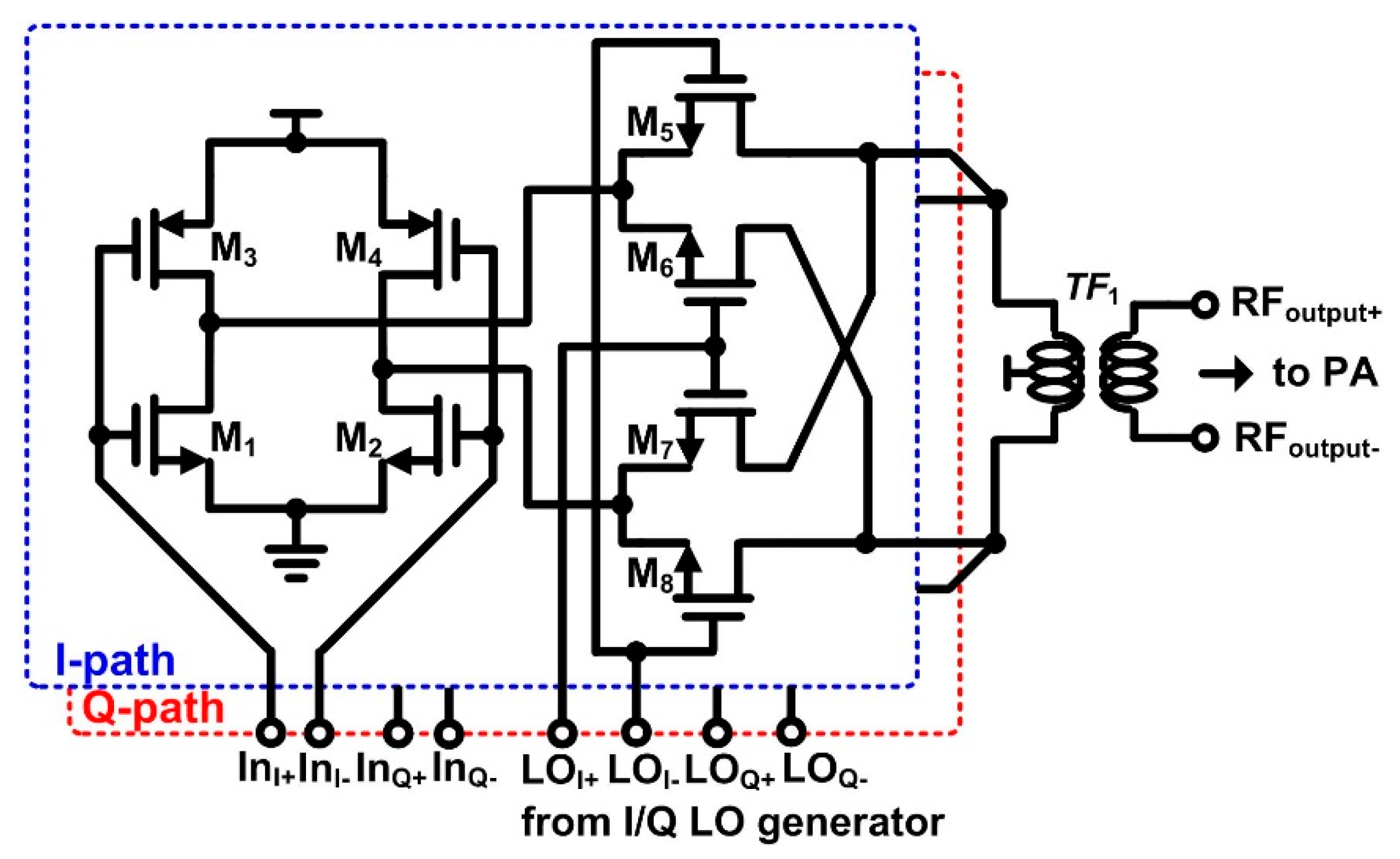
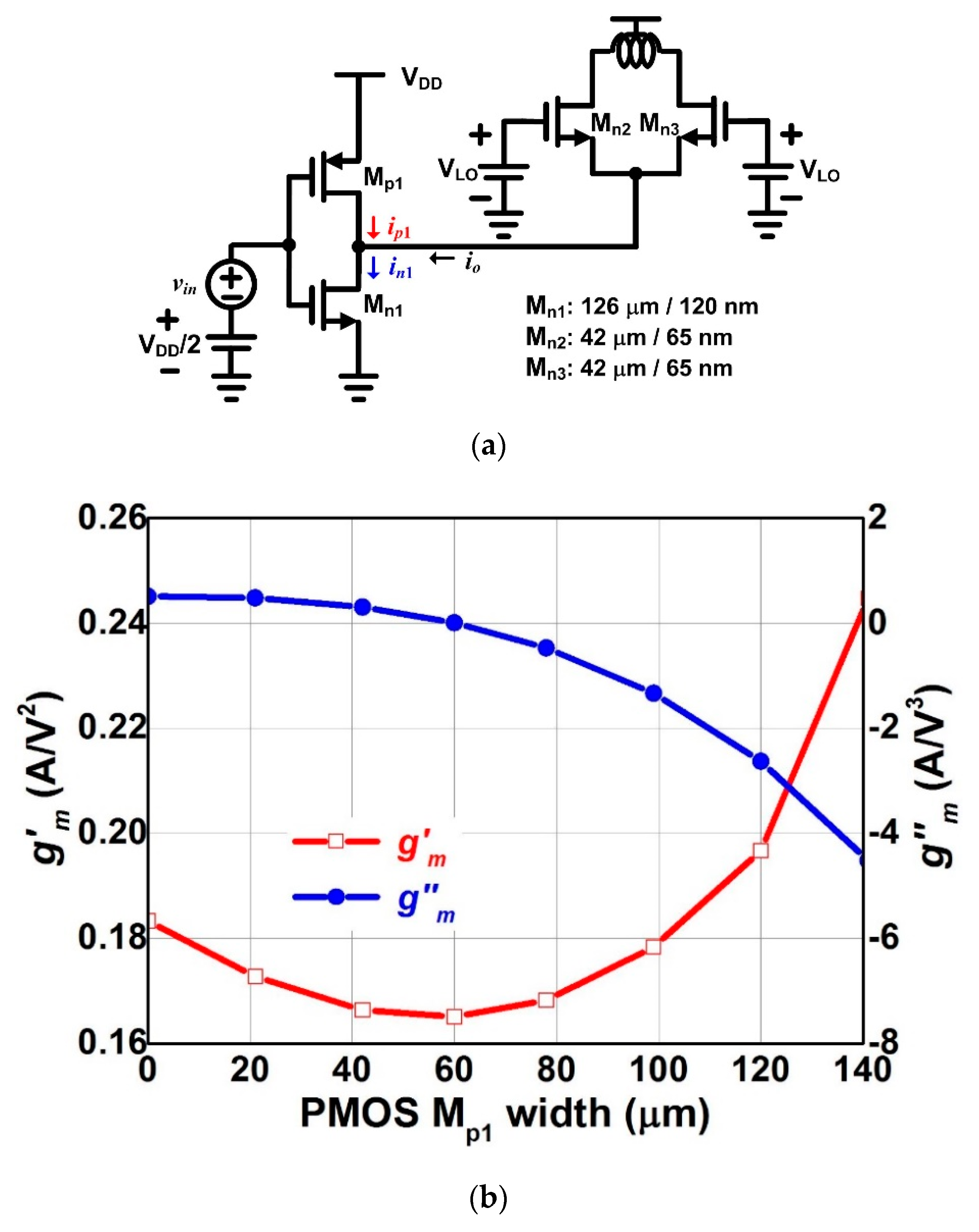
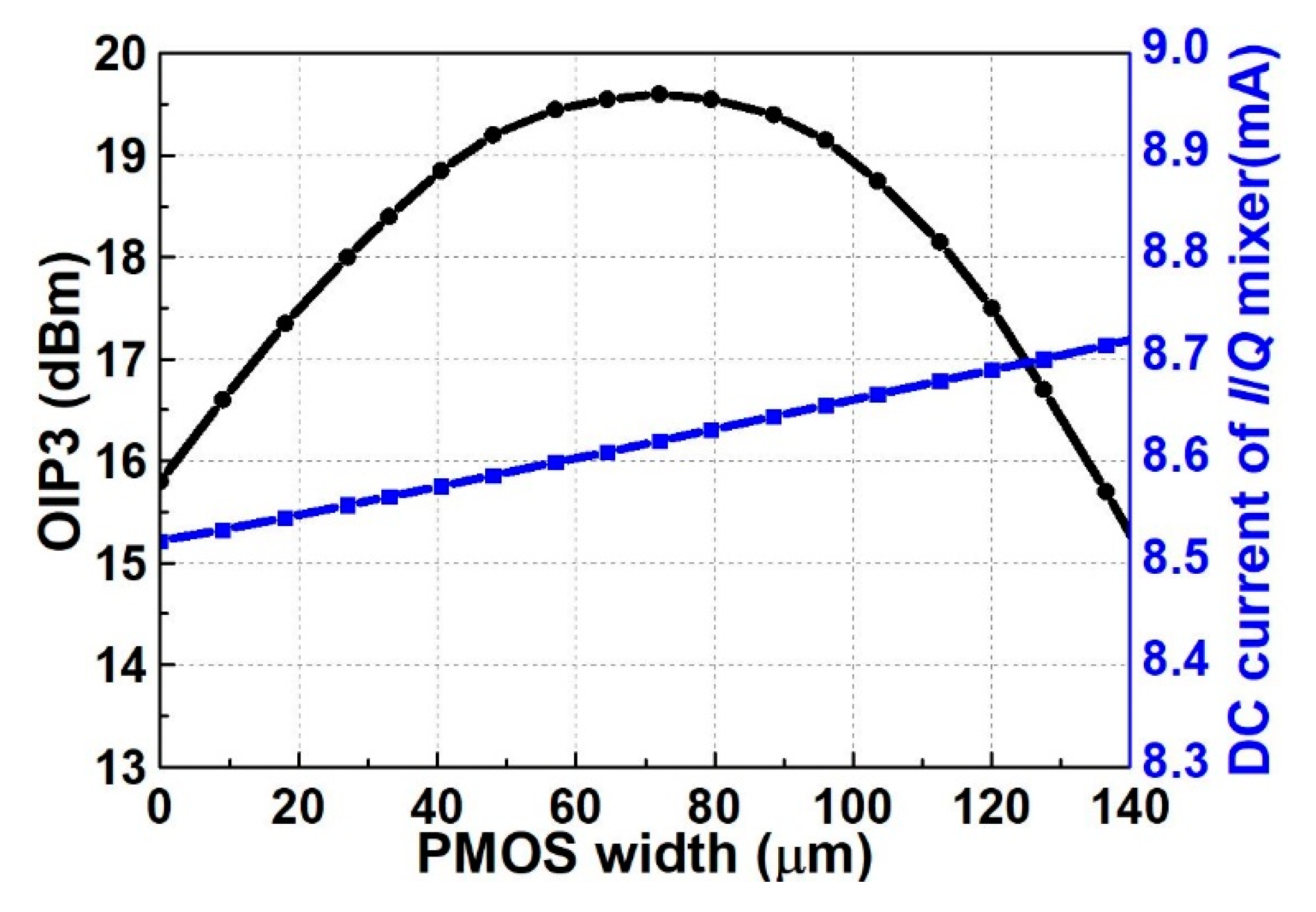
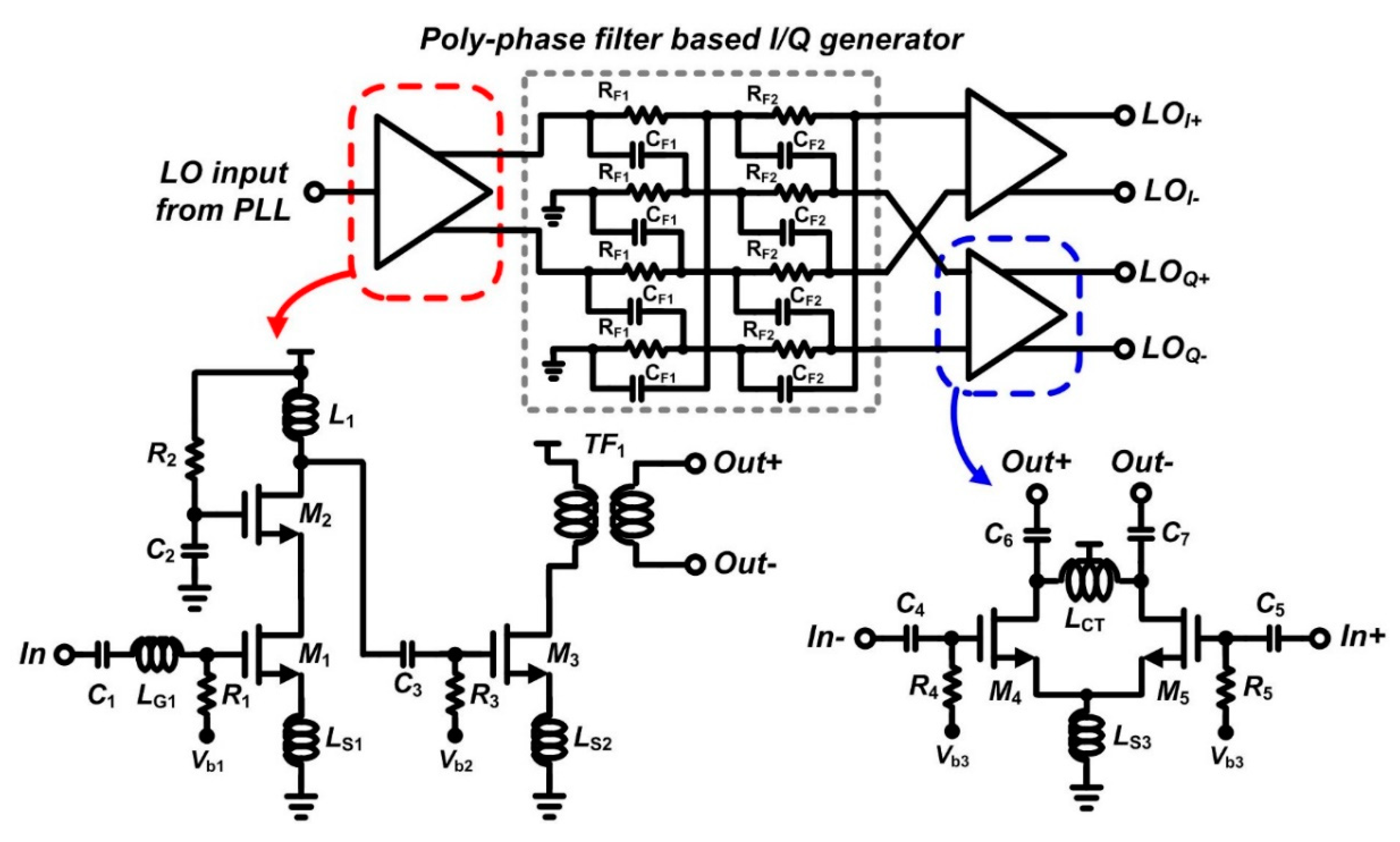
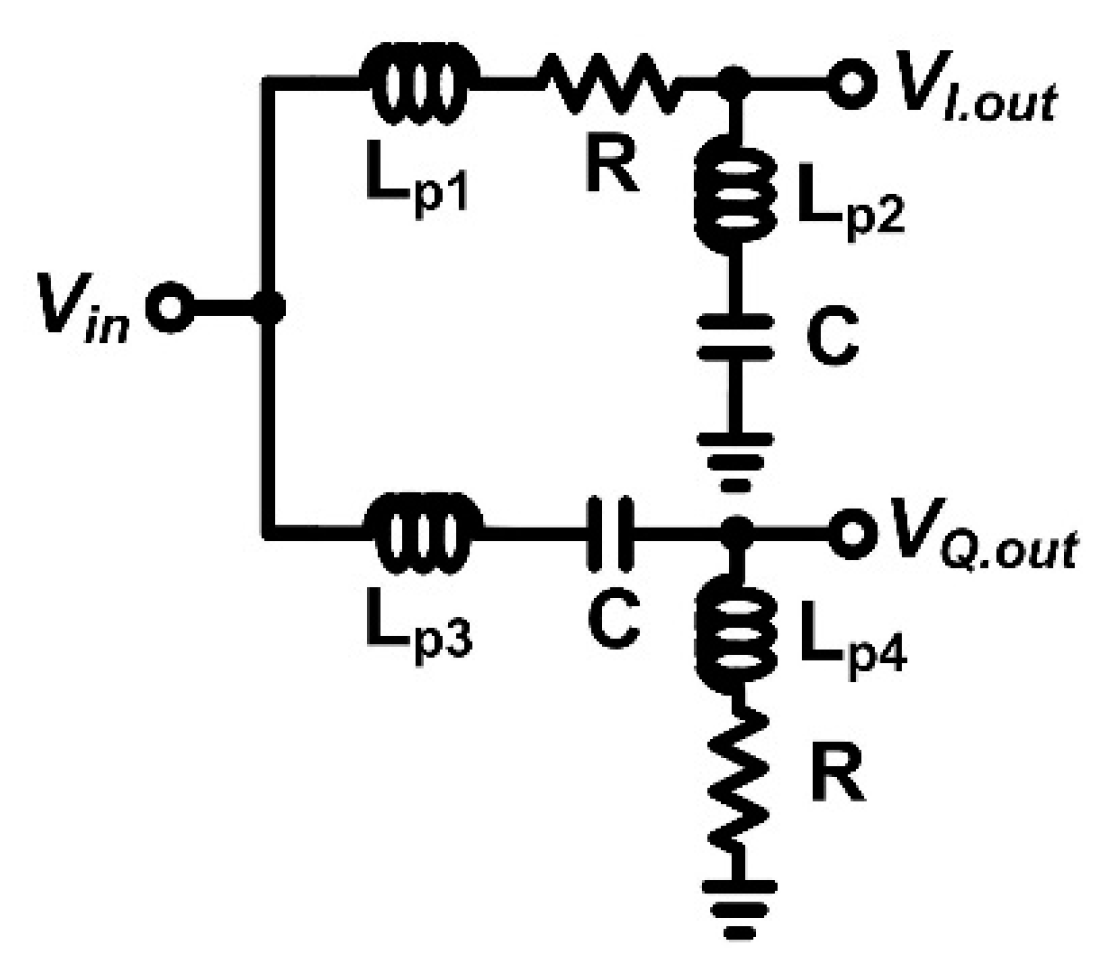
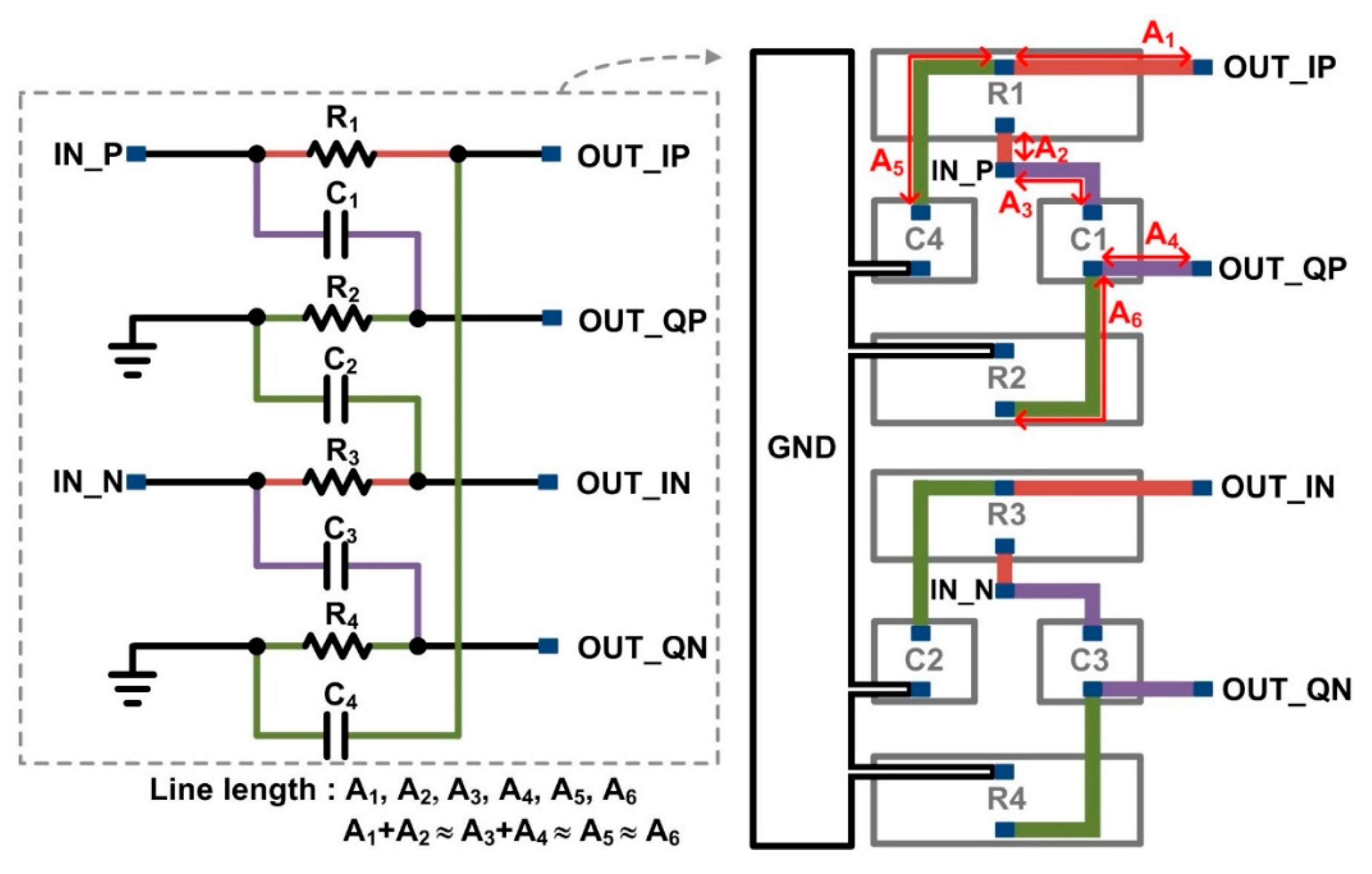

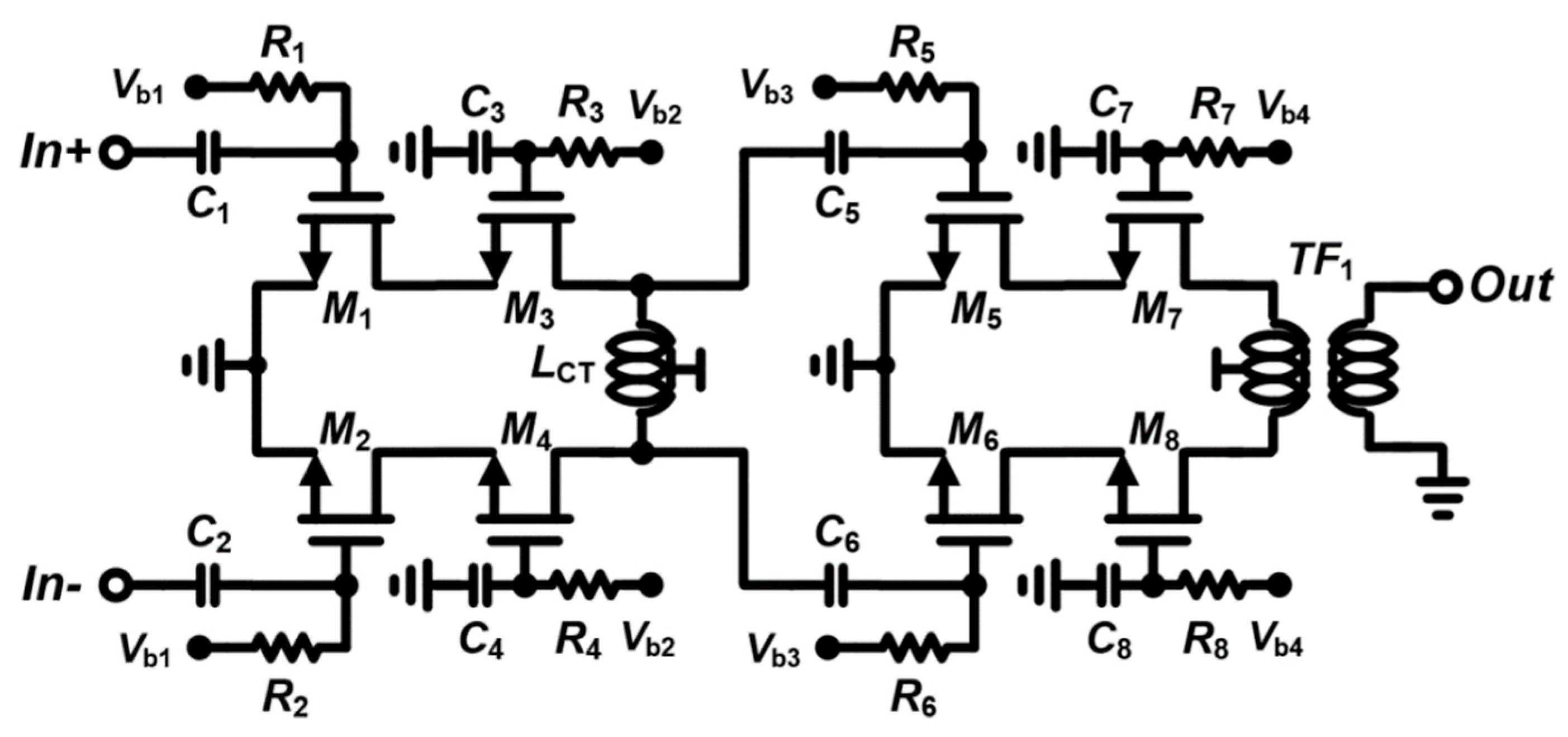

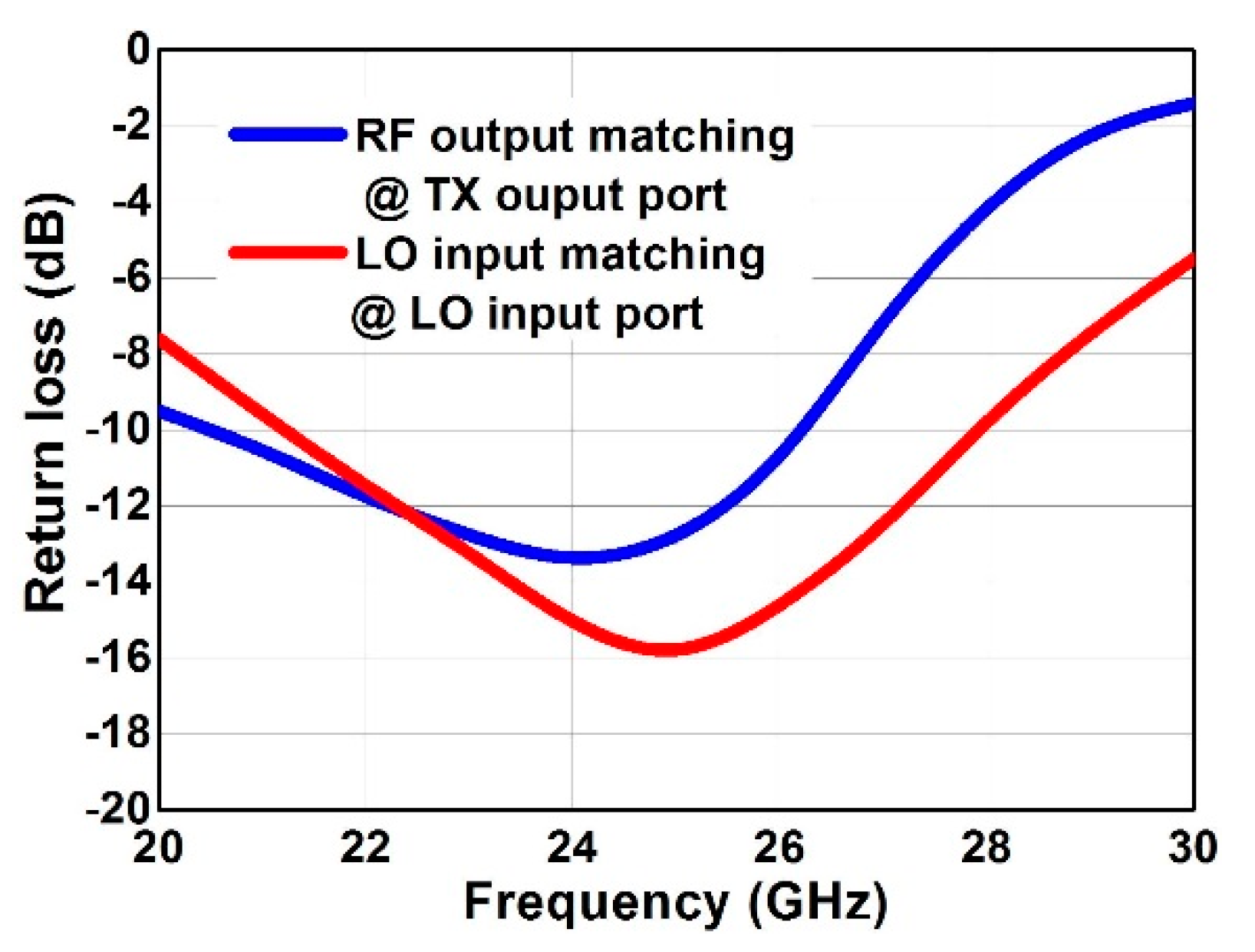
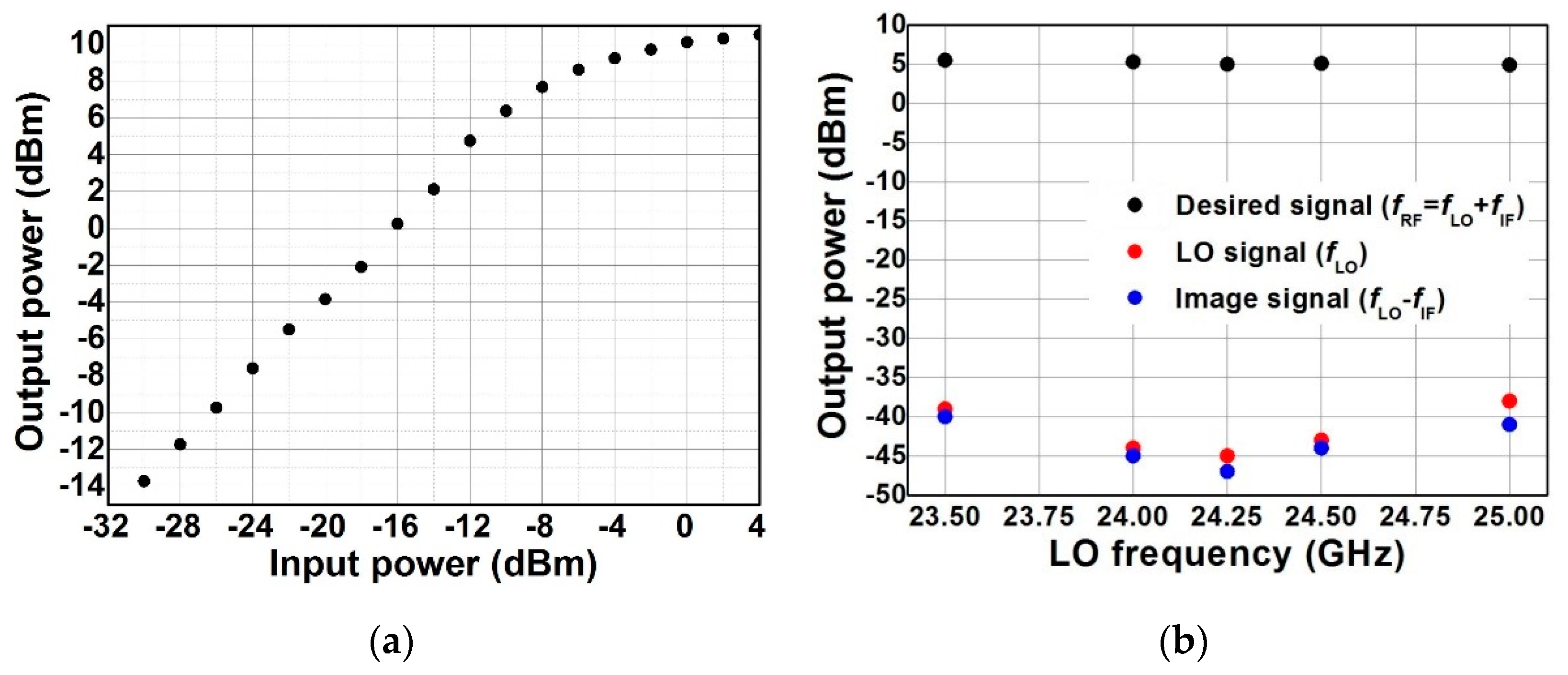
Publisher’s Note: MDPI stays neutral with regard to jurisdictional claims in published maps and institutional affiliations. |
© 2020 by the authors. Licensee MDPI, Basel, Switzerland. This article is an open access article distributed under the terms and conditions of the Creative Commons Attribution (CC BY) license (http://creativecommons.org/licenses/by/4.0/).
Share and Cite
Lee, S.; Jeon, Y.; Park, G.; Myung, J.; Lee, S.; Lee, O.; Moon, H.; Nam, I. A 24-GHz RF Transmitter in 65-nm CMOS for In-Cabin Radar Applications. Electronics 2020, 9, 2005. https://doi.org/10.3390/electronics9122005
Lee S, Jeon Y, Park G, Myung J, Lee S, Lee O, Moon H, Nam I. A 24-GHz RF Transmitter in 65-nm CMOS for In-Cabin Radar Applications. Electronics. 2020; 9(12):2005. https://doi.org/10.3390/electronics9122005
Chicago/Turabian StyleLee, Suyeon, Yangji Jeon, Geonwoo Park, Jinman Myung, Seungjik Lee, Ockgoo Lee, Hyunwon Moon, and Ilku Nam. 2020. "A 24-GHz RF Transmitter in 65-nm CMOS for In-Cabin Radar Applications" Electronics 9, no. 12: 2005. https://doi.org/10.3390/electronics9122005
APA StyleLee, S., Jeon, Y., Park, G., Myung, J., Lee, S., Lee, O., Moon, H., & Nam, I. (2020). A 24-GHz RF Transmitter in 65-nm CMOS for In-Cabin Radar Applications. Electronics, 9(12), 2005. https://doi.org/10.3390/electronics9122005







